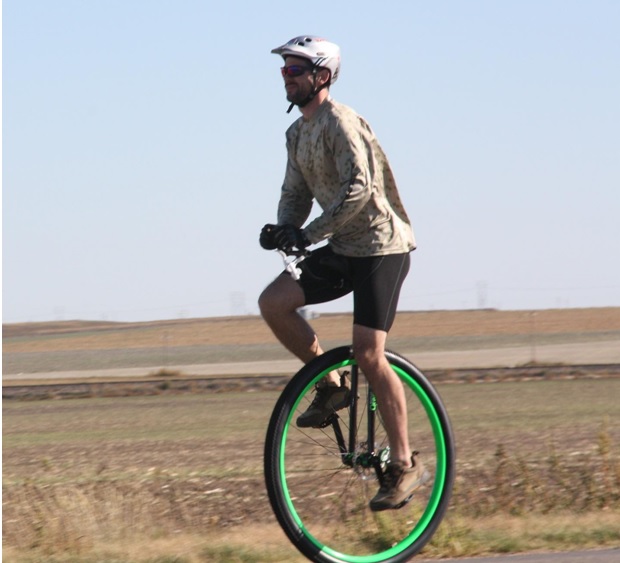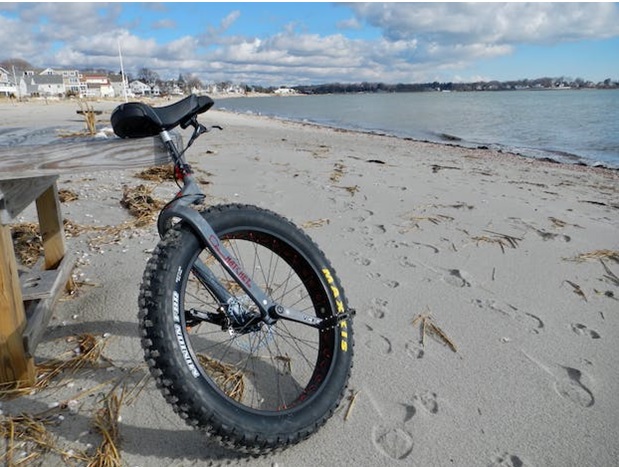Setting Your Unicycle’s Tire Pressure: Getting It Right
02/13/23
Getting a new odd bike or unicycle is exciting, but there’s little more frustrating (besides an unplanned dismount) than wrangling with your ride’s tire pressure and feeling like you can’t get it “quite right.”
But don’t feel like you have to be an expert. We’re here for that. Follow this helpful guide on dialing in your unicycle’s tire pressure for optimal handling, comfort, and performance.
Labels Can Be Deceiving!
First things first, the max pressure indicated on the tire sidewall is there for bicycles. Adding air until you’ve read this setting (for your unicycle) will set you up for possible undesired handling. At best, the ride will be uncomfortable, at worst, you’ll blow out your tire.
The Problem of Overinflated Tires
With only one wheel (and way less forgiveness than even an odd bike) overinflating your unicycle tire can present some real challenges.
One is that a tire that is overinflated and therefore too “hard” will not ride comfortably. The “harder” tire will magnify all the bumps and blips in the road, and you’ll absorb all of the vibrations.
Handling will also be adversely impacted. An overinflated tire creates a more abrupt ride, giving you less forgiveness time to react to obstacles or shifts in balance.
Finally, as has been stated, overinflating the tire is a recipe for a blowout, which is a costly accident.
So Where Do I Start?
For most riders, the best place to start (regardless of what the sidewall says) is to inflate your tire to 30 PSI.
It doesn’t matter what size the tire is. This is a good jumping-off point.
With your tire set at 30 PSI, hop in the saddle and ride around. If it feels sluggish or hard to control because the tire is too flat, add 3 to 5 PSI and test it again.
If it still lacks the responsiveness and handling you desire, add 3 to 5 PSI again and test it out.
Repeat this process until the unicycle handles in a manner that feels “right” for you.
Remember two things. One is that an increment of only 1 PSI will affect handling quite a bit, so be patient, and take note of where you start so you can keep the tire pressure at the proper level once you find it.
The other thing to keep in mind is that there are two basic ways to break down tire pressure. One is for distance riders, and the other is for “everything else,” being trick riding, muni riding, freestyle riding, and so on and so forth.
All things being equal, distance riders will probably appreciate a tire that is more inflated than other riders. A tire inflated to a higher pressure takes less effort to get going and carries momentum better.
Special Notes for 32” and 36” Riders

If you’re one of the lucky riders that has a unicycle with a 36 or 32-inch tire, congratulations - these machines are fast!
But we want you to get the most out of them and there’s something you should note: inflating your tire to 65 PSI, as the tire max pressure rating indicates, may sound nice on paper, but will result in a unicycle that rides like it has a solid rubber tire.
If you take your tire pressure this high, it’ll ride rough and handle terribly.
What you need is to inflate the tire to a pressure rating that offers most riders the ideal rolling resistance on paved or gravel surfaces. Most riders find that this is between 30 and 50 PSI.
Be aware that your weight also will affect how the unicycle handles. Start at 30 PSI, and again, go in 3 to 5 PSI increments. You will likely find that the sweet spot is within the range we indicated, though it could be a little higher.
A Note on Fat Tires (Hatchet Unicycle Riders)

We also have a special note for riders who’ve purchased Nimbus Hatchet unicycles, which have fat tires.
Fat tires are great for muni riding and can also be great on sand, snow, and other loose substrates where the extra surface area and “flotation” are needed.
However, it is important to keep in mind that higher-volume tires carry much lower max tire pressure ratings, typically between 20 and 30 PSI. Most riders will find that even 20 PSI is too high for most conditions.
Instead, start out by inflating your tire to between 10 and 12 PSI, get in the saddle, ride it for a bit, and see how it handles.
If it doesn’t handle well or takes too much effort to ride, inflate the tire 1 to 2 more PSI and get back in the saddle and ride.
Continue testing it by 1 to 2 PSI increments until it handles as you need. For your safety and the enjoyment of your riding experience, we recommend using a low-pressure gauge to test the tire pressure so you can get an accurate reading.
As always, remember that properly dialing in the tire pressure for your tire, terrain, weight, and riding style will significantly impact the enjoyment of your unicycling experience!
If You Have Questions, Please Call Us!
We are here to help! If something feels “off” about your unicycle, it could be something as simple as the tire pressure setting. Please reach out to us if you have concerns and can’t figure out what they are.
We would be more than happy to help a fellow rider and a customer like you to get the most enjoyment possible out of our sport. Contact us when you need help at 678-494-4962.

